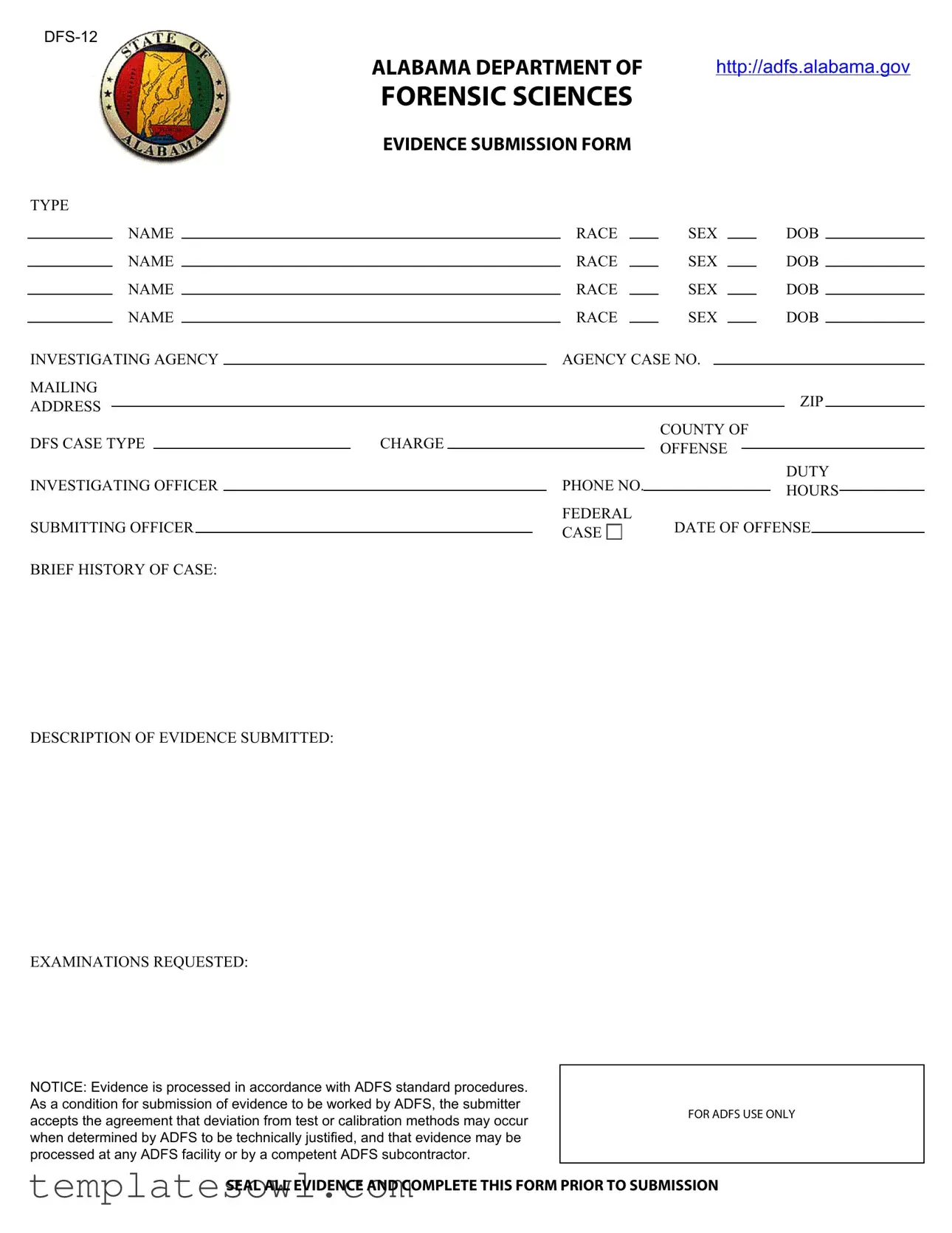When filling out the DFS-12 form, many people inadvertently make mistakes that can delay processing or even affect the outcome of their case. One common mistake is not providing complete information. Every section of the form must be filled out accurately. Missing details such as the names, races, and dates of birth can result in confusion or rejection of the submission.
Another frequent error involves incorrect case numbers. When individuals list the agency case number, it's crucial to ensure that it precisely matches what the investigating agency has on file. Even a small typo can lead to significant problems.
Additionally, many submitters neglect to specify the description of the evidence being submitted. This section should provide clear and concise information about the items being sent for analysis. Vague descriptions can lead to misinterpretation and complications during the examination process.
Omitting the case brief history is yet another mistake. This brief provides context and aids forensic scientists in understanding the case better. Failing to include it may hinder their ability to conduct thorough analyses.
People often forget to indicate the examinations requested. This section is vital as it guides the forensic department on what specific tests are necessary. Skipping it could result in time-consuming back-and-forth communication to clarify what is needed.
Another common issue is not double-checking for signature requirements. The form typically necessitates signatures from both the submitting officer and the investigating officer. If these sections are left unsigned, the form may be deemed incomplete.
Additionally, not sealing evidence properly can create problems. Evidence must be packaged securely and in compliance with established protocols to maintain its integrity. If evidence is not sealed correctly, it may be rejected for processing.
Submitting the form without verifying the appropriate mailing address can lead to delays or lost items. Always ensure that the address is correct and corresponds to the right department for the evidence submission.
Overlooking the instruction that evidence should be processed within ADFS standard procedures can lead to misunderstandings. It is vital to recognize that while the submitter can provide requests, the final decision on testing methods rests with ADFS.
Finally, many individuals fail to adhere to the deadline for submission. Being late can seriously impact the timeline of an investigation. It's essential to be aware of any applicable deadlines for evidence submission related to specific cases.

